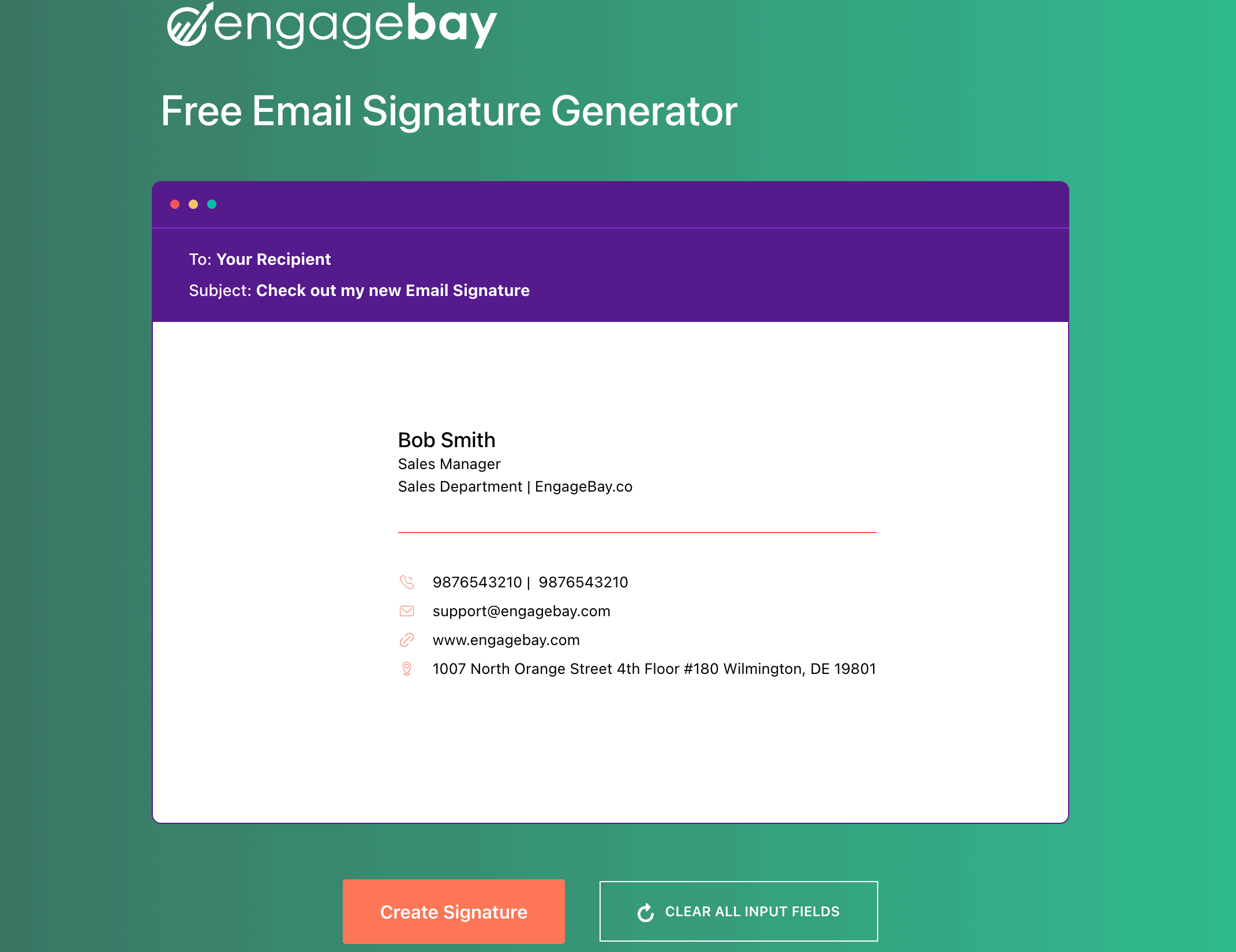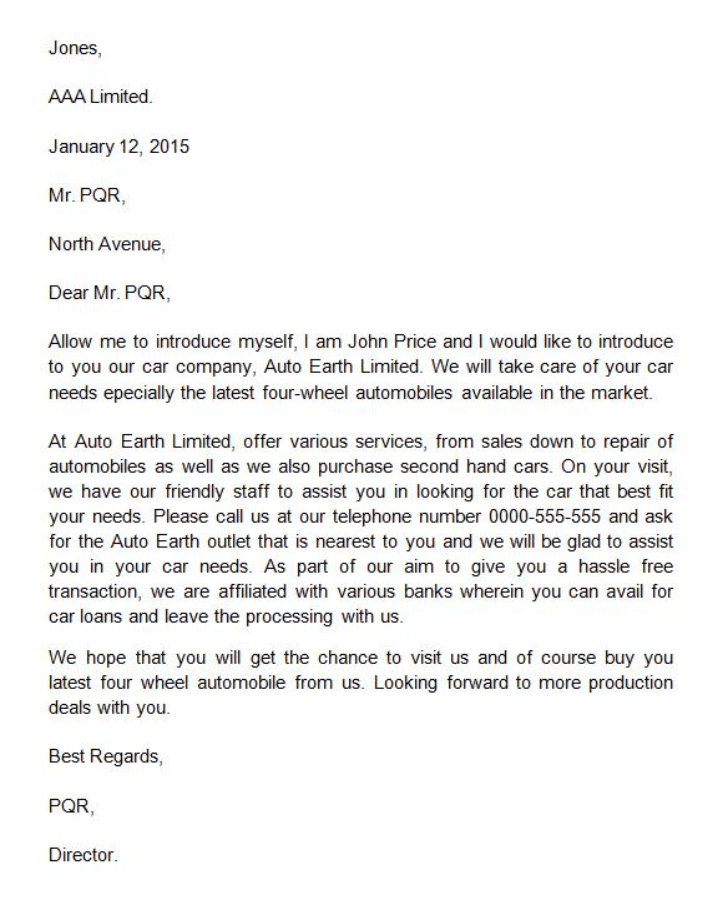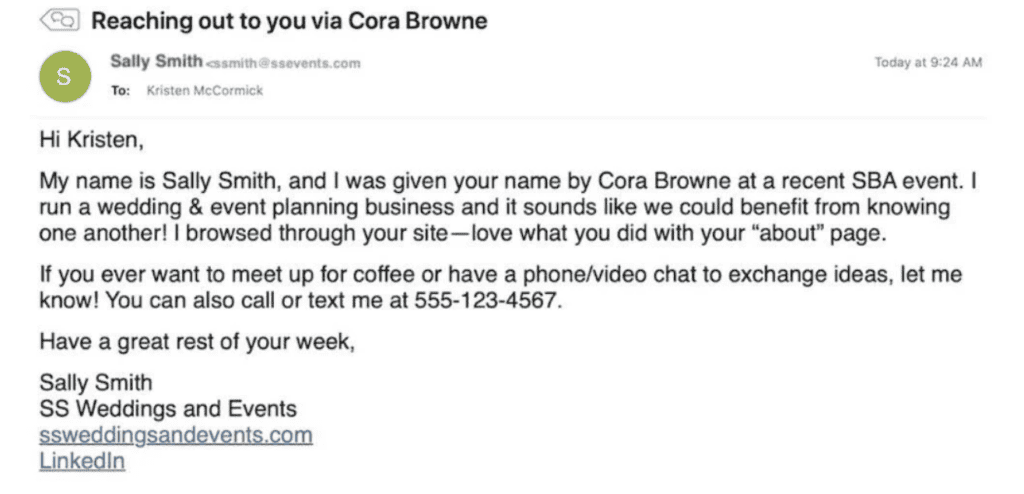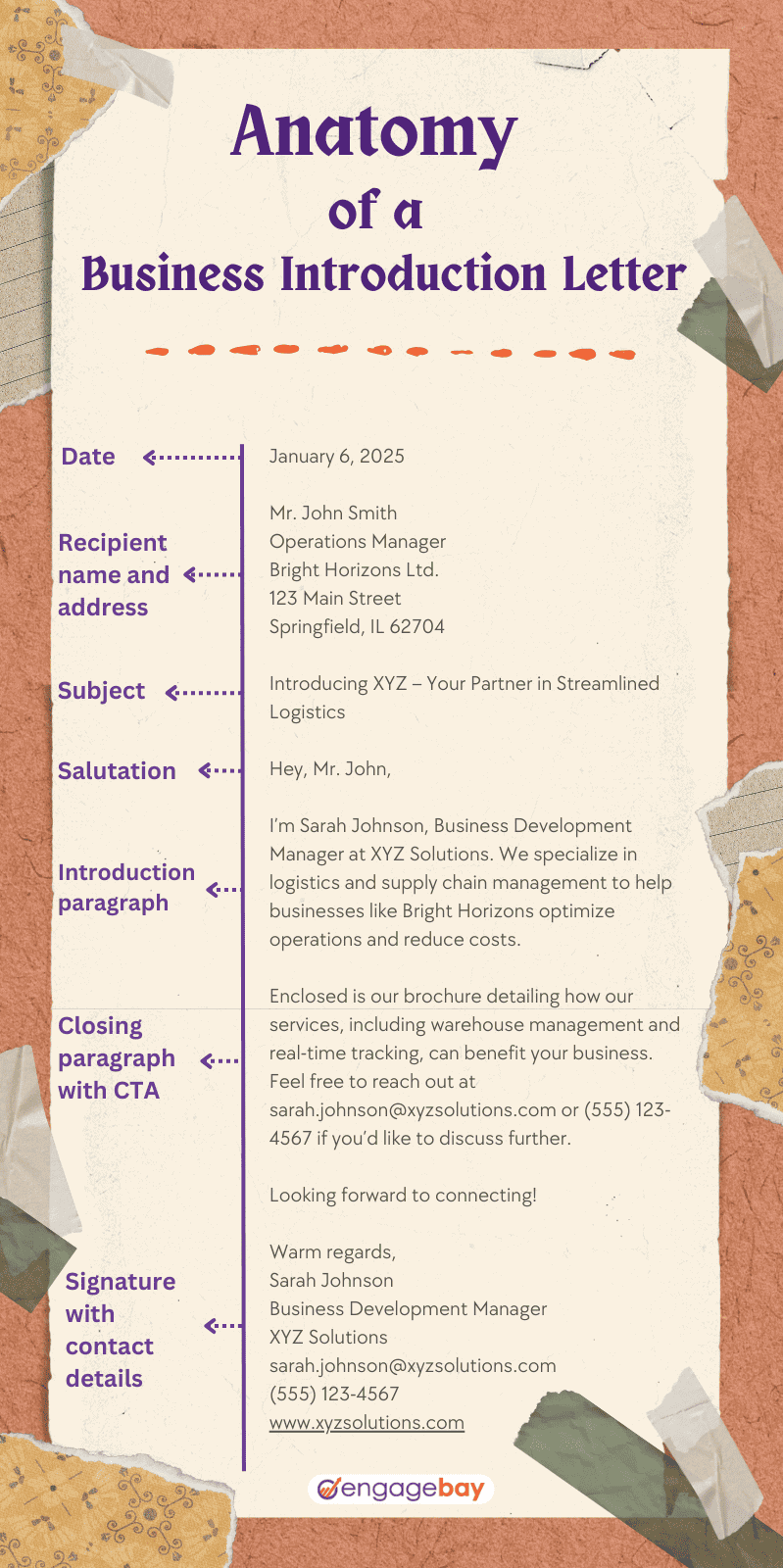A business introduction letter helps you connect with organizations and professionals, from investors to donors, distributors, partners, sponsors, potential clients or customers, and vendors.
You may write the letter on your behalf or to introduce someone else’s services within your company.
But where do you start when writing one of these letters?
In this blog post, we explain the anatomy of a business introduction letter and show you good introduction examples as well as tips for beginners. We also have a business introduction template you can use to send to a prospective client.
Let’s get started!
What you’ll find here:
- Why you need a business introduction letter
- The anatomy of a business introduction letter
- Ready-made templates you can copy-paste
- Real-life examples to inspire you
- How to write a winning business introduction letter
- Dos and don’ts
Table of Contents
Why Do You Need a Business Introduction Letter?
It’s a good practice to always ask “why” before you do something. Now, why exactly do you need a business introduction letter?
To introduce yourself and your company/business, duh! But why can’t it be a text? Think about it: this is your first point of contact with another business or a potential client — do you want to be that casual?
A business introduction letter can be your golden ticket to making a good first impression and starting strong business relationships.
Here’s why you need one.
1. To reach out and connect
It’s the perfect way to introduce yourself and your business to a new contact. To increase your brand awareness, make sure you reflect your brand voice and personality and, as cliché as it might seem, make a good first impression.
2. To showcase your business
Whether you’re reaching out to a potential client, proposing a partnership, or applying for a job, a business introduction letter provides all the important details about your company and what you offer.
Remember to sell the sizzle AND the steak. Tell the recipient how your business will benefit them instead of boring them with your product features and jargon.
3. To establish new business relationships
Good marketing is putting yourself out there. A single business letter might be the start of a long and mutually beneficial partnership, you never know.
The Anatomy of an Effective Business Introduction Letter
Now that the ‘why’ is covered, let’s move on to the ‘what.’ What does a business introduction letter look like? It has a specific anatomy you can rely on for any professional occasion. Here are the components.
1. The introduction
A business intro letter should always be addressed to a specific party; no ‘sir’ or ‘madam’ or ‘to whom it may concern’ here. If you don’t have the contact information for the person you want to reach, do some digging for it online.
I’m sure you can track down a name and email address from LinkedIn, or perhaps a colleague can pass along a business address. As for the language you use in the intro, it’s up to you, but it should reflect who you are and your brand identity.
2. The purpose
Once you introduce yourself, it’s time to get to the heart of the matter. The purpose of your letter should be front and center in the first paragraph. Just state it for now.
For example, your letter could read:
“Hi, Mr. Buckingham. My name is Steve. I was referred to by Lucy Cunningham, a colleague at XYZ Corp. I’ve recently changed departments, and she mentioned you’re like a mentor to so many of us, so I figured I could contact you for some guidance.”
3. A brief review of your skills and credentials
Why should they consider hiring or working with you? And if you’re vouching for someone else, why should they trust your recommendation?
This is where you need to back it up with experience. Discuss your credentials, talents, certifications, knowledge, and skills. Don’t go on too long about this.
This isn’t a resume, so you don’t have to list all your professional accomplishments.
4. Value addition
Now, this is the part people often neglect. Remember, business relationships shouldn’t be one-sided. Your clients should feel like you and your products or business add value to their lives.
Highlight how your services or products solve their problems and enhance their experience. Show them the benefits they can expect and why partnering with you is a smart choice.
That said, don’t promise what you can’t achieve. It sounds nice to say you can help them get 10,000 more page views a month, but if you have no realistic way of achieving that, you will lose your vendor or partner and damage your reputation.
5. The call-to-action
Restating your purpose should always align with your call to action. For example, writing, “I would love it if we could chat, maybe this Friday at 3 p.m.?” is a call to action.
The CTA is designed to get the reader to do something, whether looking at your resume, calling you to schedule a job interview, or setting up a date and time to discuss a potential partnership. It’s one of the most critical parts of a business introduction letter.
6. The sendoff
There’s no need to overcomplicate your sendoff. You can use whatever signoff you do for any other professional message, whether it’s “Best,” “Thanks,” or even “Have an excellent day.”
Do what feels natural and ensure your sendoff reflects your relationship with your recipient. For example, “Sincerely” or “Cordially” is best for more formal communications.
7. The signature
Don’t forget to conclude your business introduction letter with a signature.
An email signature provides additional contact information and professional details about you. It typically includes:
- Your full name
- Your job title
- Your company name
- Your phone number
- Your professional email address
- Company logo (if applicable)
- Social media links (if relevant)
Including an email signature ensures that the recipient has all the necessary information to get back in touch with you quickly and adds a polished finish to your correspondence.
A well-crafted email signature can reinforce your brand and make it easier for the recipient to connect with you across multiple platforms. You can use our free email signature generator to create professional, eye-catching email signatures.

3 Business Introduction Letter Templates for Various Scenarios
Feel free to copy and customize to fit your needs!
1. Business introduction letter template for collaboration
There’s nothing left to do but write, so use this sample letter template to get your first business introduction letter underway. You can modify the letter format based on your needs.
[Your name]
[Your business name/company name]
[Your business address]
[Date]
[Name of recipient]
[Name of recipient’s business]
Hi, [recipient name], how are you? My name is [your name] of [company or organization], and I’m writing to you about a business opportunity. I feel like we could be great partners if we work together.
I have [name your experience and credentials], which makes me an expert in my area. With your [explain their strong suits], we could further [industry goals].
Would you like to have a conversation on Friday, the 12th, about this opportunity, say at noon? My phone number is [number], or we can have a video call or even meet face-to-face. Whatever works best for you is good for me!
Thanks so much for your time. Hope to hear from you soon.
Sincerely,
[Your Full Name]
[Your Job Title]
[Your Contact Information]
[Your Email Address]
[Your Company’s Website]
2. Business introduction letter for a potential client
Use this template to reach out to a potential client of yours.
[Your Name]
[Your Business Name/Company Name]
[Your Business Address]
[Date]
[Recipient Name]
[Recipient’s Business Name]
[Recipient’s Business Address]
Dear [Recipient Name],
Hey, [Recipient Name]! My name is [Your Name], and I am the [Your Job Title] at [Your Company]. I am writing to introduce our company and discuss how we can help [Recipient’s Company] with [specific area or need].
At [Your Company], we pride ourselves on [brief description of your core strengths or services]. We have helped businesses like yours [specific benefit or result], and I believe we can offer significant value to [Recipient’s Company].
I would love to arrange a meeting to discuss how our services can be tailored to meet your needs and help achieve your goals. Are you available for a call or meeting next week to explore this further?
Thank you for considering this introduction. I look forward to the opportunity to work with you.
Sincerely,
[Your Full Name]
[Your Job Title]
[Your Contact Information]
[Your Email Address]
[Your Company’s Website]
3 Examples of Business Introduction Letters
Let’s review that anatomy in action with some business introduction letter examples.
1. Business-to-customer introduction letter

What I love about this sample company introduction letter by Food52 is how it’s brimming with positivity. Their positive brand voice and message, “everything you need to eat and live well,” makes you want to check out their website. The welcome offer they give is the cherry on top!
Do you want to create a similar template for your business letter? Look no further! EngageBay has 1,000+ free HTML email templates that you can easily edit to fit your brand style.
2. Employee-to-customer letter

This letter is written on behalf of an employee at Auto Earth Limited named John, who’s reaching out to a potential customer to entice them about what the company does and why the customer should visit.
Jones explains that the auto company offers repairs, secondhand vehicle purchases, and easy transactions by working with area banks. He also mentions the agency’s friendly employees and invites the customer to call Auto Earth Limited.
3. Business introduction letter for referrals

If someone refers your services to another professional, they can write a business intro letter, or you can do it yourself, as seen in the above example.
Sally Smith mentions her connection to Cora Browne in the first sentence and the subject line, which is smart, as it inspires the recipient to open and read the email.
This letter is especially short, but given its purpose, it’s the ideal length.
How to Write an Engaging Business Introduction Letter
Producing appealing copy isn’t always as effortless as it appears. These tips will help you nail yours.
- Be yourself (but be professional): An introduction letter is your chance to shine. If you can’t be your authentic self when writing this letter, then who can you be? I know we all want to present the best versions of ourselves, and you may have concerns or doubts, but try to let your personality shine.
- Think like your recipient: Put yourself in the shoes of the recipient. What kind of letter would they want to read? What would make them read and respond to your letter? Having a common ground always certainly helps, whether you belong to the same industry or came up just like they did when they first started.
- Be benefit-oriented: People always want to know, “What’s in it for me?” so tell them. Writing in a benefits-driven way, especially when securing a new client or vendor, will surely catch their interest.
- Include your brand voice and values: Fostering a genuine connection entails letting your brand values and voice guide you. This is part of staying true to your personality, as there is only one brand like yours.
- Tailor the letter to various business contexts: A business introduction letter serves many purposes, whether offering a service, proposing a partnership, or networking for a job. Remember to fine-tune the details of your letter to suit the intended purpose for the sake of clarity.
Dos and Don’ts of Business Introduction Letters
Do you still need more guidance on assembling your business introduction letter? This collection of do’s and don’ts will help you structure your message and get it sent out ASAP.
DO write with a goal in mind
A business introduction letter aims to accomplish a specific goal, be it another potential client, a new job, or a business partner.
Keep your goal in mind while writing. Don’t go off-topic
If your goal isn’t clear, your recipient will have difficulty grasping what you’re trying to propose, and you may lose the relationship before you start.
DON’T be too formal
There’s a misconception, even when writing standard letters of introduction, that formality is key, let alone in business intro letters. While keeping it professional is important, that doesn’t mean your letter has to be stuffy and bland.
Remember, showcasing your personality is fine. It makes for a more engaging read and inspires the recipient to respond to you.
DO keep it short
A business intro letter is not designed to be a novel. Your words shouldn’t even fill an entire page. If they do, you’ve written entirely too much. Instead, curtail your message to only a few paragraphs.
DON’T assume the reader knows who you are
You might be a big deal around your office, but you can’t assume that everyone outside your branch knows who you are, even if you are spoken about favorably. That’s why you should always introduce yourself and explain who you are and what you do.
If the reader, by chance, already knows who you are, then that’s fine. However, you’re giving the reader the benefit of the doubt that they’re unfamiliar with you and your work and quickly educating them.
DO be clear and straightforward
I talked about burying the lead in my guide to introduction letters, and it’s a point worth reiterating here. The most important points of your letter should be in the first paragraph, and you can elaborate more on them later, just like in a news story.
DON’T be afraid to use appropriate humor
Is humor okay in a business introduction letter? It can be, but only if you feel comfortable with it. Please don’t try to force humor if it feels unnatural or isn’t your style. Being yourself is most important, so if you’re naturally funny, let that show!
However, no matter how easily humor comes to you, always keep it work-appropriate.
DO keep the content about your audience
While you can talk about yourself in your business introduction letter, you should turn much of your language toward your audience, i.e., your reader. You’ll recall that a dash of flattery is always good, but make sure you’re authentic.
Anyone can tell when you’re slathering it on too thick, and at that point, what was supposed to be a positive sentiment comes out phony.
DON’T miss out on templates
Templates are helpful starting points for writing a business introduction letter, especially if it’s your first one. You might rely on a template for your first couple of letters until you feel you’ve got the hang of it and can handle it independently.
DO personalize your letter
While templates are helpful to utilize, you shouldn’t use them verbatim. Add your unique spin to your creative writing, incorporating elements of your brand tone. If you send the same letter to everyone, you probably won’t get many replies. Personalize your letters to win over prospective clients.
DON’T forget to follow up
Even if someone intends to respond to you, they don’t always get the opportunity immediately. Then, whoops, your message is forgotten. That’s why following up is so valuable. A small nudge can be all it takes to put you back into the client or vendor’s mind. They’ll give you some of their time and get the ball rolling.
Wrapping Up
A business introduction letter requires professionalism and personality to drive an objective, such as striking a business partnership, finding new clients or jobs, or expanding your network.
Even if you condense your business intro letters to emails or social media DMs rather than send them in a mailbox, knowing how to write one of these letters can always take your business further!
EngageBay is an all-in-one marketing, sales, and customer support software for small businesses and startups. You get email marketing, automation, free email templates, a landing page builder, A/B testing, and more.
Sign up with EngageBay for free, or book a demo with our experts.
FAQs
1. How long should a business introduction letter be?
A business introduction letter should be concise, ideally no longer than one page. Aim to keep it around 3-4 paragraphs, ensuring you cover all essential points without overwhelming the reader.
2. What tone should I use in a business introduction letter?
The tone should be professional but also reflect your brand’s personality. Avoid overly formal language; instead, aim for a friendly yet respectful tone.
3. How do I make my business introduction letter stand out?
Personalization is key. Mention specific details about the recipient or their business to show you’ve done your homework. Highlighting unique aspects of your business or offering can also make your letter more memorable.
4. Does a business introduction letter have to be a mailed letter?
Not at all! In today’s digital age, you can send a business intro letter via email, LinkedIn message, or however you like to communicate.
5. What are the most common closing words in a business introduction letter?
Closing words like ‘thanks again,’ ‘sincerely,’ ‘yours truly,’ ‘best regards/regards,’ and ‘appreciatively’ are staples for a reason! You can use any of them as you close your letter.
6. Should I follow up after sending a business introduction letter?
Yes, following up is crucial. If you don’t receive a response within a week or two, send a polite follow-up email to remind the recipient about your initial letter.
Content updated for freshness and SEO by Swastik Sahu and Abdul Bashid.


